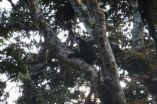Researchers dig through the gene bank to uncover the roots of the evolutionary tree
2012-07-26
(Press-News.org) Ever since Darwin first published The Origin of the Species, scientists have been striving to identify a last universal common ancestor of all living species. Paleontological, biochemical, and genomic studies have produced conflicting versions of the evolutionary tree. Now a team of researchers, led by a professor at the State University of New York at Buffalo and including area high school students, has developed a novel method to search the vast archives of known gene sequences to identify and compare similar proteins across the many kingdoms of life. Using the comparisons to quantify the evolutionary closeness of different species, the researchers have identified Actinobacteria, a group of single membrane bacteria that include common soil and water life forms, as the base of the evolutionary tree. They will present their findings at the annual meeting of the American Crystallographic Association (ACA), held July 28 – Aug. 1 in Boston, Mass.
"Today the gene banks are enormous. They contain more than 600,000 genes from the genomes of more than 6,000 species," says William Duax, a physical chemist and lead researcher on the team. However, many of the gene sequences, and the proteins they encode, are not systematically identified. Proteins that are structurally similar and perform the same function could be labeled with different numbers that obscure the fact that they belong to the same protein family. "Our first challenge is to make sure that we are comparing apples to apples and oranges to oranges," says Duax.
Duax and his team have developed efficient ways to search through the gene banks looking for all copies of the same family of protein. They concentrated their efforts on proteins that are found on the surface of cell components called ribosomes. The ribosomal proteins are among the most accurately identified proteins, and because they are not transferred between individuals independent of reproduction, are good candidates for tracing the evolution of all species.
Ribosomal proteins in the same family twist into the same shape. The sequence of amino acids in a protein determines what 3D structure it folds into and Duax and his colleagues identified patterns that marked specific types of turns. They used these marker sequences to identify and almost perfectly align the proteins, similar to the way you could use five points to identify the shape of a star and align its orientation to match other star shapes.
Structurally aligning the proteins allowed the researchers to easily spot small differences that indicate organisms belong on different branches of the evolutionary tree. For example, a single amino acid difference in one ribosomal protein separates bacteria with one cell membrane from those with two.
At the ACA meeting, the researchers will present the results from the analysis of two different ribosomal protein families, called S19 and S13. Duax will present the analysis of protein S19, while high school student Alexander Merriman will present analysis of protein S13. Merriman joined Duax's lab through a scientific mentorship program designed to give teenagers hands-on experience with cutting-edge research. "They are enthusiastic researchers and do great work," Duax says of the students he welcomes into his lab each Friday.
Both analyses point to Actinobacteria as the last universal common ancestor. This agrees with previous work done by the group on proteins named S9 and S12.
The researchers will continue to search for more evidence to add to their developing picture of the evolutionary tree. The group plans to analyze additional proteins, as well as DNA and RNA. "We are applying a systematic approach to make sense of a sometimes messy gene bank," says Duax.
###This news release was prepared for the American Crystallographic Association (ACA) by the American Institute of Physics (AIP).
MORE INFORMATION ABOUT THE 2012 ACA MEETING
The ACA is the largest professional society for crystallography in the United States, and this is its main meeting. All scientific sessions, workshops, poster sessions, and events will be held at the Westin Waterfront Hotel in Boston, Mass.
USEFUL LINKS:
Main meeting website: http://www.amercrystalassn.org/2012-meeting-homepage
Meeting program: http://www.amercrystalassn.org/2012-tentative-program
Meeting abstracts: http://www.amercrystalassn.org/app/sessions
Exhibits: http://www.amercrystalassn.org/2012-exhibits
ABOUT ACA
The American Crystallographic Association (ACA) was founded in 1949 through a merger of the American Society for X-Ray and Electron Diffraction (ASXRED) and the Crystallographic Society of America (CSA). The objective of the ACA is to promote interactions among scientists who study the structure of matter at atomic (or near atomic) resolution. These interactions will advance experimental and computational aspects of crystallography and diffraction. They will also promote the study of the arrangements of atoms and molecules in matter and the nature of the forces that both control and result from them.
ELSE PRESS RELEASES FROM THIS DATE:
2012-07-26
The economic impact of the Olympics has not been the same for all host countries. According to the Olympic Studies Centre at the Autonomous University of Barcelona, the games held in the Catalonian capital 20 years ago were a resounding and incomparable success. But it is not always the case.
The Olympic Games have always been thought of as a great opportunity to give a long-term boost to the economy by taking advantage of a short-term event. But before embarking on the costly effort of organising the Olympics, each candidate city should evaluate their own goals and capacities ...
2012-07-26
Pancreatic beta cells produce insulin, responsible for controlling blood sugar levels and thus essential for our survival. Among the numerous factors that affect the workings of these cells, a protein called Cx36 was identified a few months ago by a research team at the UNIGE. The scientists there had demonstrated that in transgenic mice, suitably modified so as not to produce any Cx36, synchronization of the beta cells ceased and insulin production went out of control. This de-synchronization of insulin secretion is the first measurable sign in people suspected of developing ...
2012-07-26
In a statement on the chances and limits of using bioenergy, the German National Academy of Sciences Leopoldina has come to the conclusion that in quantitative terms, bioenergy plays a minor role in the transition to renewable, sustainable energy sources in Germany at the present time and probably in the future. Bioenergy requires more surface area, is associated with higher greenhouse gas emissions and is more harmful to the environment than other renewable sources such as photovoltaic, solar thermal energy and wind energy. In addition, energy crops potentially compete ...
2012-07-26
Amsterdam, July 26, 2012 - Surveys of drug use form an important basis for the development of effective drug policies, and also for measuring the effectiveness of existing policies. For the first time in history, scientists have now made direct comparisons of illicit drug use in 19 European cities by a cooperative analysis of raw sewage samples.
To date, questionnaire-based studies have been the most common measurement method. Such studies are performed amongst different segments of society including partygoers, drug addicts and the general population. Additional information ...
2012-07-26
Until now it was thought that fin whales in the Strait of Gibraltar and the Alboran Sea made up part of the distribution of this species of whale in the Mediterranean. However, an international team of scientists led by a Spaniard has revealed that their population has been overestimated by including specimens from the Atlantic that visit at certain times the western Mediterranean, where the noise generated by human activity affects their survival.
In 1991 the fin whale (Balaenoptera physalus) population in the Mediterranean Sea was estimated at 3500 specimens. A new study, ...
2012-07-26
Brain tumors are the primary cause of cancer mortality in children. Even if a cure is possible, young patients often suffer from the stressful treatment which can be harmful to the developing brain. The most common childhood brain tumors are medulloblastoma and pylocytic astrocytoma.
In order to find new target structures for more gentle treatment methods, cancer researchers are systematically analyzing all changes in the genetic material of such tumors. This is the mission of the PedBrain consortium, which was launched in 2010 as the first German part in the International ...
2012-07-26
Chinese researchers have published the first evidence that a population of the recently discovered snub-nosed monkey, Rhinopithecus Strykeri, live in China. Until now researchers have been unable to photograph the monkey, whose upturned nostrils are said to make it sneeze in the rain. The paper is published in the American Journal of Primatology.
The species was first discovered by a team led by Ngwe Lwin from the Myanmar Biodiversity and Nature Conservation Association and described by Dr Thomas Geissman in the American Journal of Primatology in October 2010. It was ...
2012-07-26
Cincinnati, OH. July 26, 2012 – Congenital hypothyroidism is thyroid hormone deficiency at birth that, if left untreated, can lead to neurocognitive impairments in infants and children. Although the World Health Organization recommends 200-300 µg of iodine daily during pregnancy for normal fetal thyroid hormone production and neurocognitive development, the US Institute of Medicine considers 1,100 µg to be the safe upper limit for daily ingestion. A case series scheduled for publication in The Journal of Pediatrics describes three infants who developed congenital hypothyroidism ...
2012-07-26
This press release is available in German.
Leipzig. The carcinogenic harmful substance benzene can seriously impact the soil and ground water following chemical accidents or at old industrial sites. Nevertheless, bacteria exist which can degrade this compound even in the absence of oxygen. Until now it was not clear which organisms take part in this process and how they work together. With modern analytical procedures scientists of the Helmholtz Centre for Environmental Research (UFZ) have succeeded for the first time in tracking the path of this harmful substance through ...
2012-07-26
Scientists led by the President of The University of Manchester have demonstrated a drug which can dramatically limit the amount of brain damage in stroke patients.
Professor Dame Nancy Rothwell, Professor Stuart Allan and their team have spent the last 20 years investigating how to reduce damage to the brain following a stroke.
They have been testing the effectiveness of the drug Anakinra (IL-1Ra), which is already used for rheumatoid arthritis in experimental studies of stroke.
This new study builds on previous research, although the big difference is that rats ...
LAST 30 PRESS RELEASES:
[Press-News.org] Researchers dig through the gene bank to uncover the roots of the evolutionary tree



